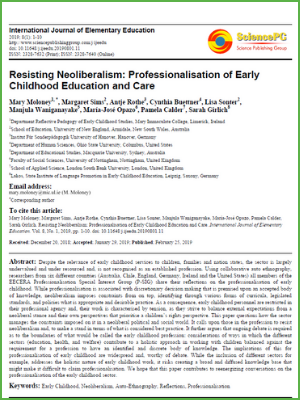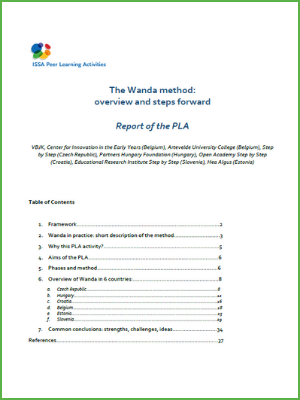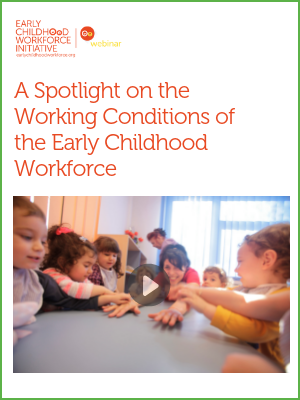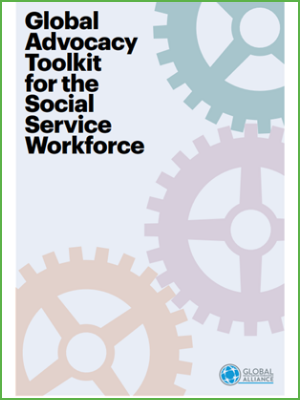Resisting Neoliberalism: Professionalisation of Early Childhood Education and Care

Resisting Neoliberalism: Professionalisation of Early Childhood Education and Care focuses on the professionalization of early childhood in Australia, Chile, England, Germany, Ireland and the United States.
This paper questions how the sector manages the constraints imposed by a neoliberal political and social world and calls upon manages the constraints imposed on it in a neoliberal political and social world. It calls on professionals to take a stand in terms of what is considered best practice. The paper further argues that continued debate is needed around the boundaries of what is called the early childhood profession, considering the ways in which the education, health and welfare sectors contribute to a holistic approach balanced against the requirement for a profession to have an identified and discrete body of knowledge.
International Electronic Journal of Elementary Education
Year of Publication:2019
www.researchgate.net










